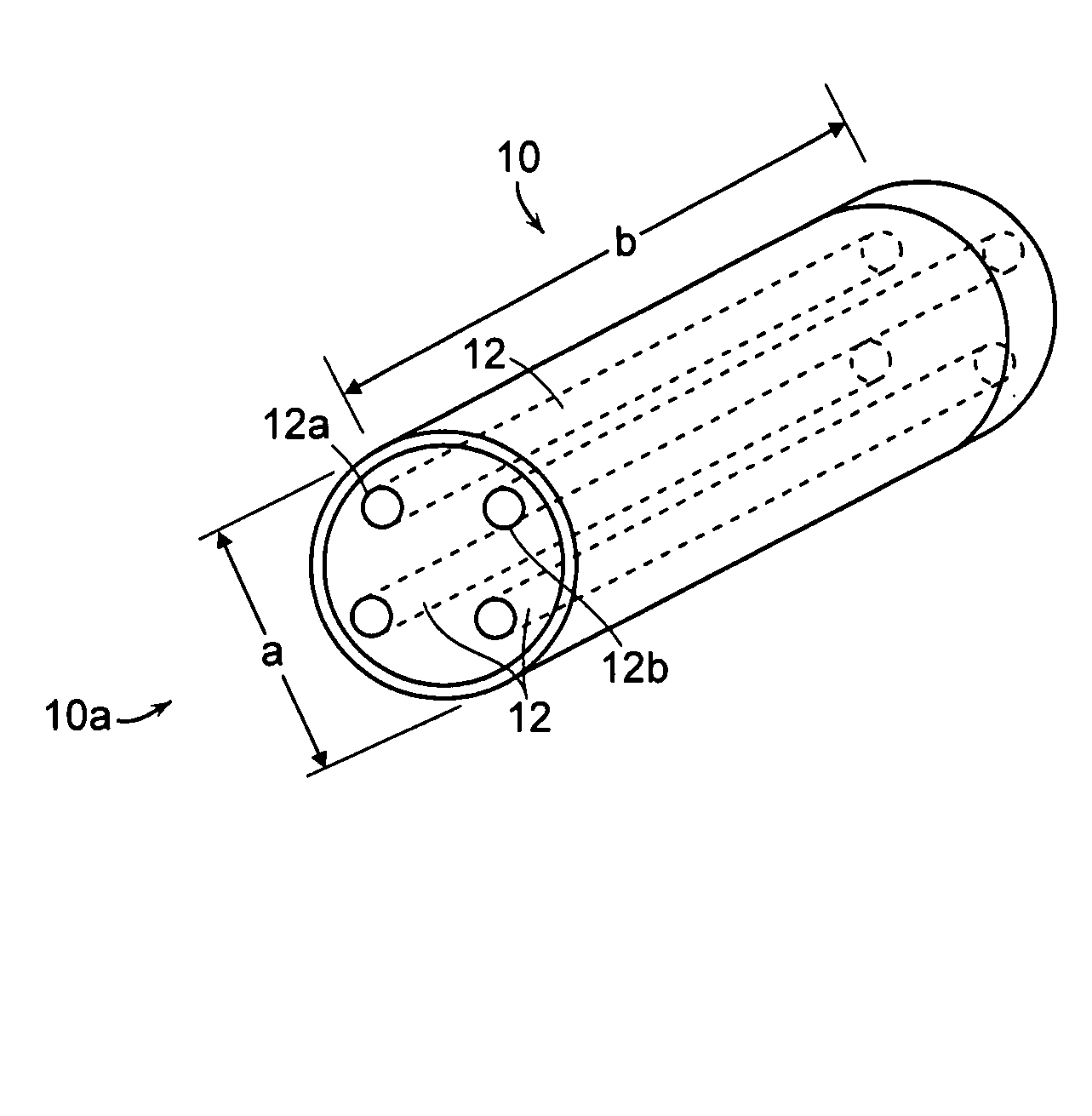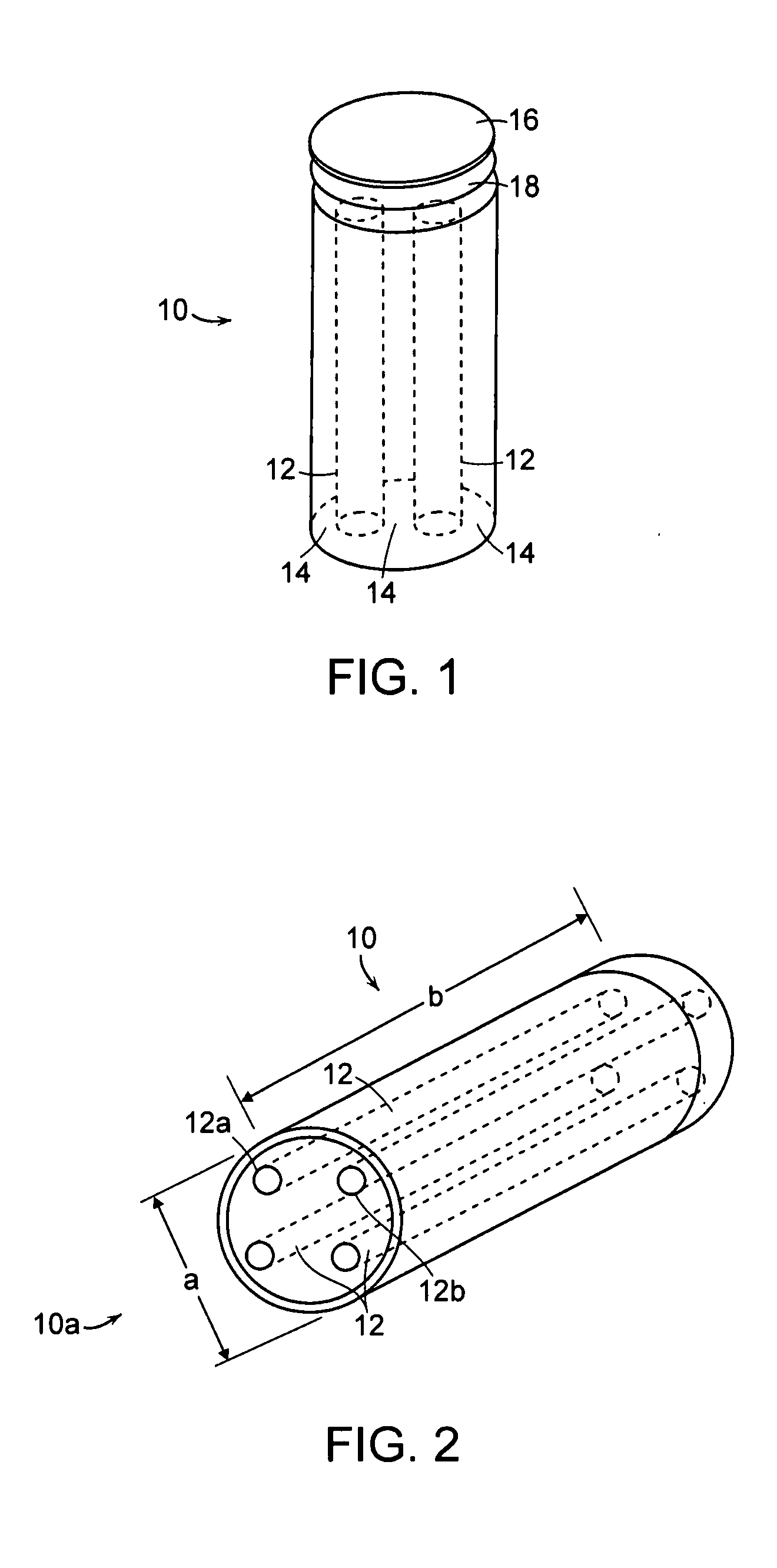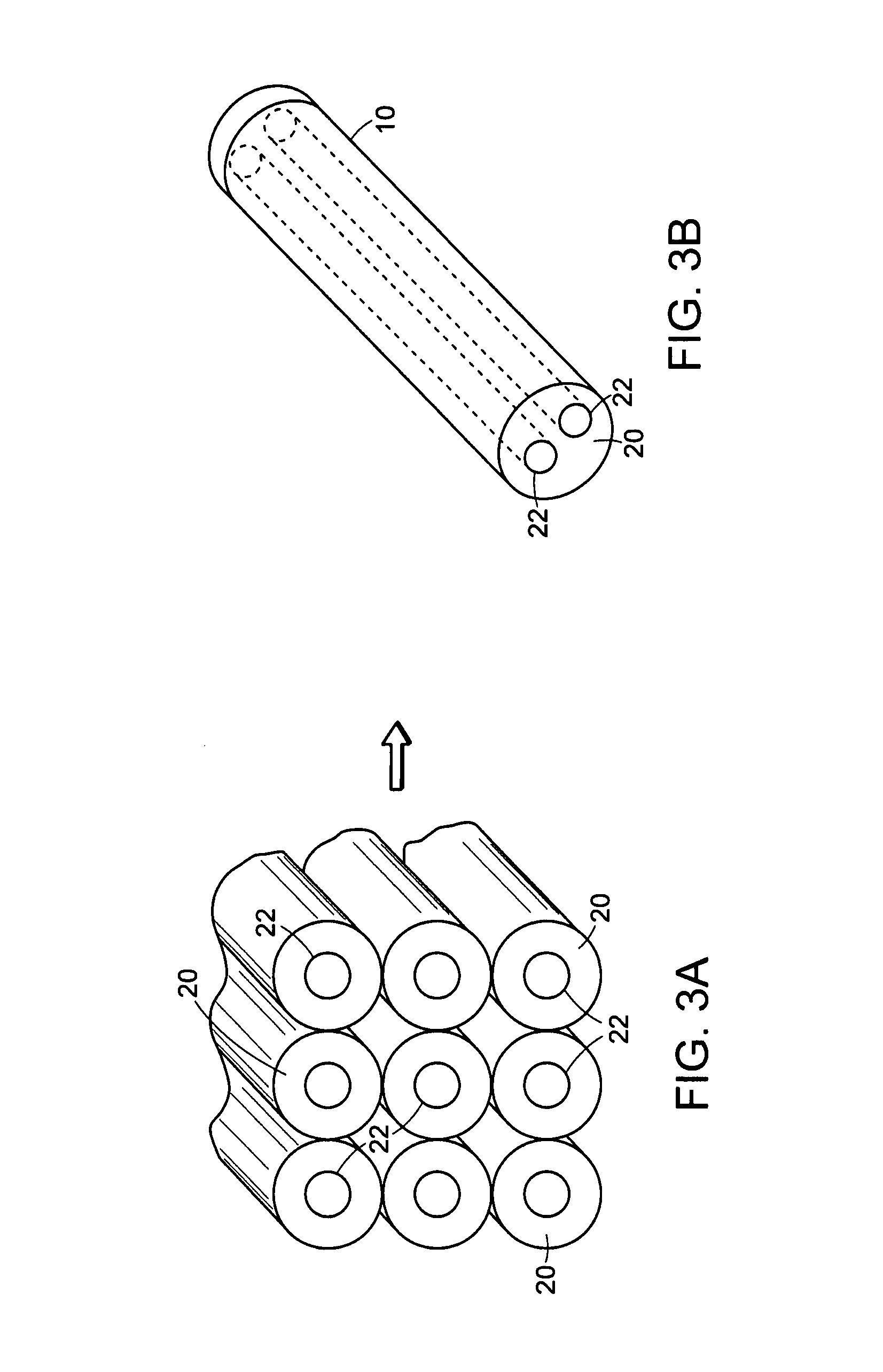Ceramic heating elements
a ceramic and resistive technology, applied in the field of ceramic resistive heating elements, can solve the problems of many conventional igniters, which do not consistently meet such requirements, and current ceramic igniters also have suffered electrical failure during use, so as to achieve the effect of increasing the operating li
- Summary
- Abstract
- Description
- Claims
- Application Information
AI Technical Summary
Benefits of technology
Problems solved by technology
Method used
Image
Examples
example 1
Heating Element Fabrication
[0092] A heating element of the invention of the general configuration shown in FIG. 2 of the drawings may be prepared as follows.
[0093] Powders of a conductive composition (30 vol % MoSi2, 20 vol % SiC, remainder Al2O3) and an insulating composition (20 vol % SiC and 80 vol % Al2O3) were separately mixed with about 16 wt % water and 5 wt % Methyl Cellulose (Dow A4M) to form two pastes. The two pastes are formed into rod shapes with the insulating paste forming about 40 rods elements and the resistive paste forming about 5 elements that are segregated by the insulating rods. Those packed rods are then extruded and reduced through a 0.31 inch diameter die on a Mohr piston extruder to provide a cylindrical heating element.
[0094] After that replication process, the conductive rods are reduced to about 0.05 inches in diameter and two of the conductive rods can form a circuit with a conductive cap affixed to the distal end of the heating element.
[0095] The ...
example 2
Co-Axial Heating Element
[0097] A heating element of corresponding to the configuration of FIG. 5 of the drawings is prepared by the general procedures of Example 1 above.
PUM
| Property | Measurement | Unit |
|---|---|---|
| voltage | aaaaa | aaaaa |
| voltage | aaaaa | aaaaa |
| voltage | aaaaa | aaaaa |
Abstract
Description
Claims
Application Information
 Login to View More
Login to View More - R&D
- Intellectual Property
- Life Sciences
- Materials
- Tech Scout
- Unparalleled Data Quality
- Higher Quality Content
- 60% Fewer Hallucinations
Browse by: Latest US Patents, China's latest patents, Technical Efficacy Thesaurus, Application Domain, Technology Topic, Popular Technical Reports.
© 2025 PatSnap. All rights reserved.Legal|Privacy policy|Modern Slavery Act Transparency Statement|Sitemap|About US| Contact US: help@patsnap.com



